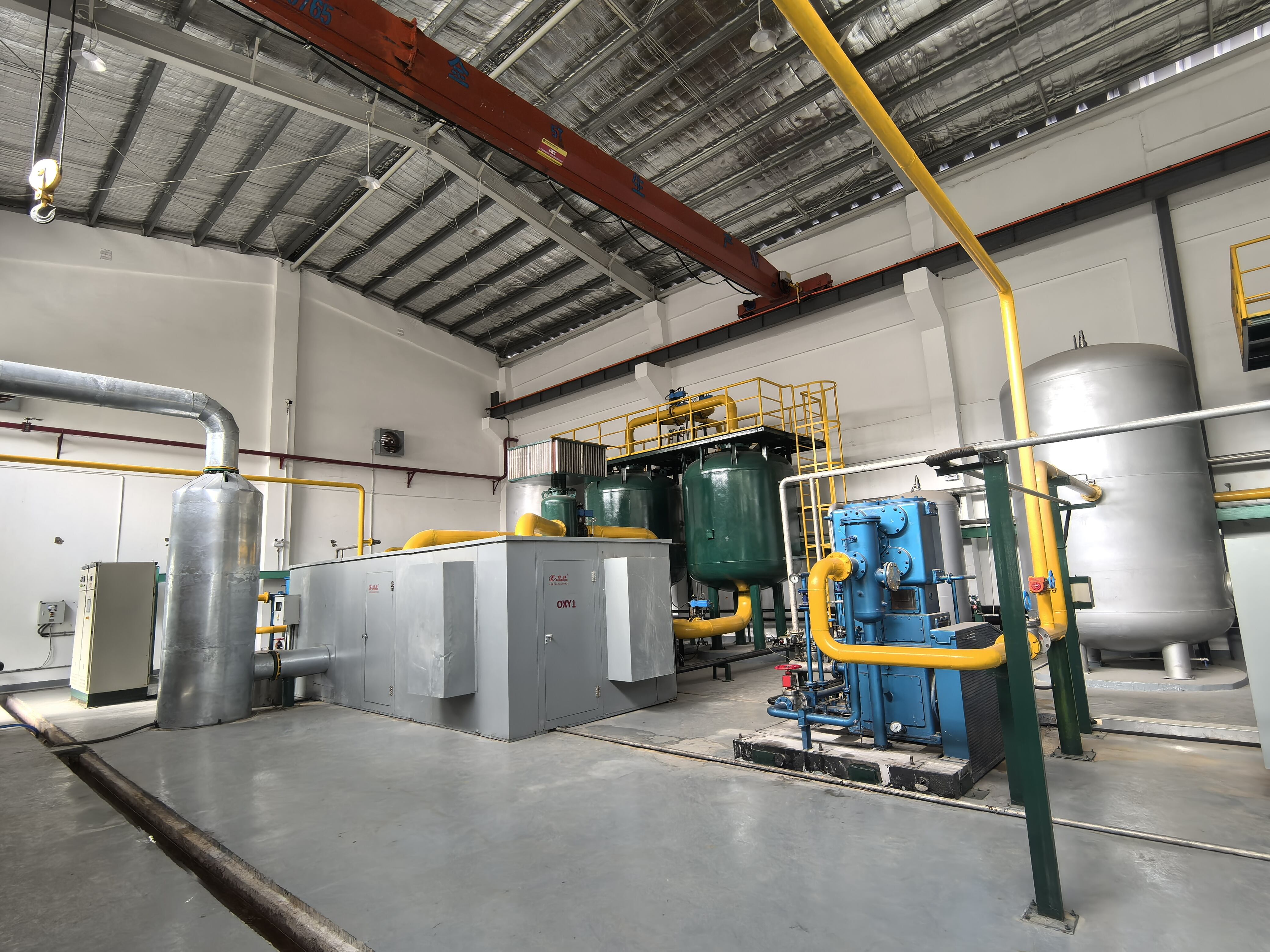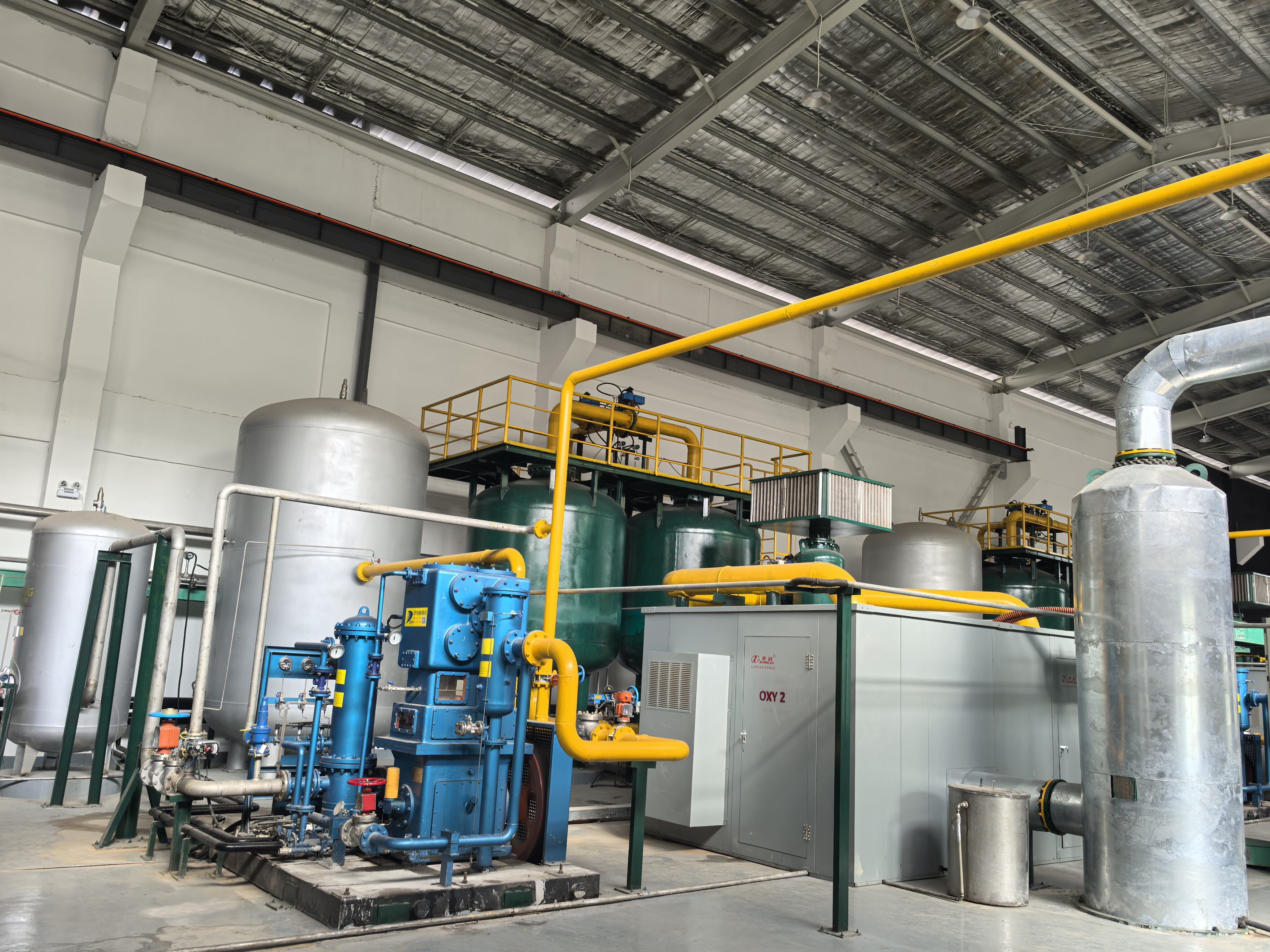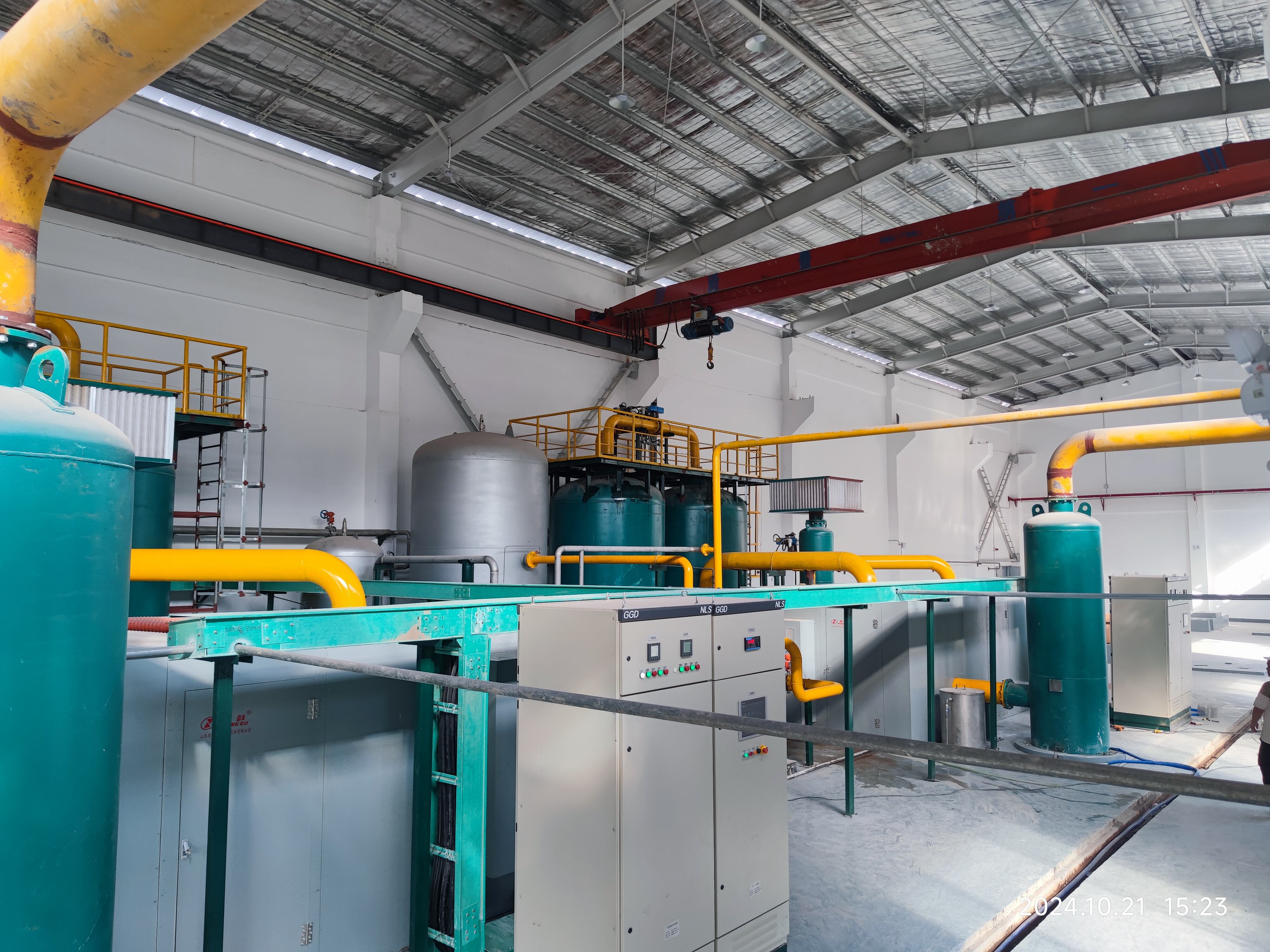quy trình tạo oxy vpsa
VPSA (Vacuum Pressure Swing Adsorption) là một công nghệ tiên tiến sản xuất oxy tinh khiết từ không khí môi trường. Quy trình này sử dụng các vật liệu màng lọc phân tử chuyên dụng để hấp thụ chọn lọc nitơ từ không khí, tạo ra oxy tập trung là sản phẩm chính. Hệ thống hoạt động thông qua quy trình tuần hoàn gồm các giai đoạn nén và chân không, trong đó không khí được nén và đưa qua các giường hấp thụ. Trong quá trình nén, các phân tử nitơ bị giữ lại trong màng lọc phân tử trong khi các phân tử oxy đi qua. Giai đoạn tiếp theo bằng cách tạo chân không tái sinh vật liệu hấp thụ bằng cách loại bỏ nitơ đã được bắt giữ. Các hệ thống VPSA thường đạt mức độ tinh khiết của oxy từ 90% đến 95%, khiến chúng lý tưởng cho nhiều ứng dụng công nghiệp. Công nghệ này bao gồm các hệ thống điều khiển tinh vi giám sát và điều chỉnh các thông số vận hành để duy trì đầu ra oxy ổn định. Những hệ thống này có thể mở rộng, từ các đơn vị nhỏ sản xuất vài trăm mét khối mỗi giờ đến các cài đặt lớn có khả năng tạo ra hàng nghìn mét khối mỗi giờ. Công nghệ VPSA đã được áp dụng rộng rãi trong sản xuất thép, sản xuất kính, cơ sở y tế và ngành công nghiệp chế biến hóa chất, nơi mà việc sản xuất oxy tại chỗ đáng tin cậy là rất quan trọng cho hoạt động.


